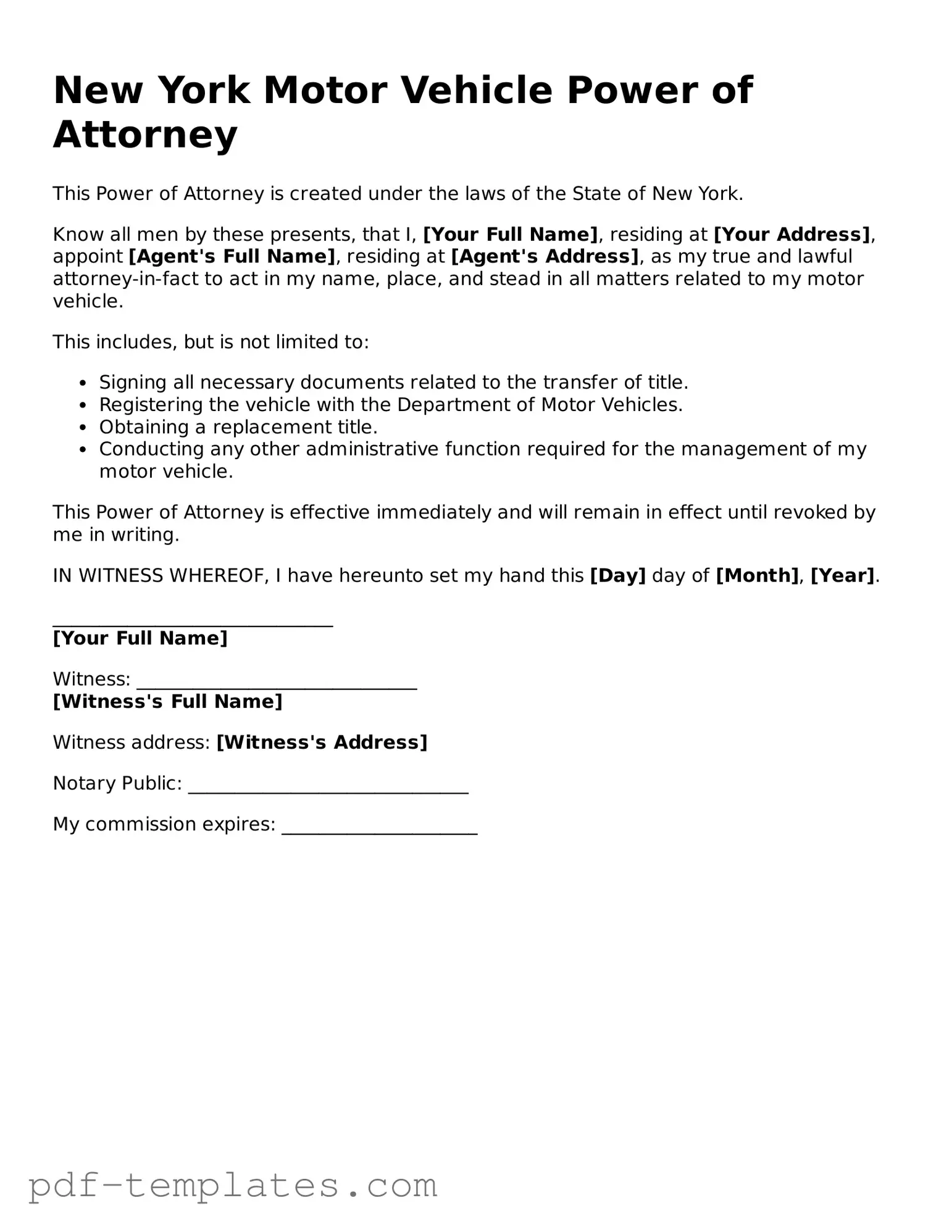The New York Motor Vehicle Power of Attorney form shares similarities with the General Power of Attorney. Both documents allow one individual, known as the principal, to grant authority to another person, called the agent, to act on their behalf. This can include managing financial matters, making decisions, or handling specific transactions. While the Motor Vehicle Power of Attorney is limited to vehicle-related issues, the General Power of Attorney can cover a broader range of responsibilities, making it a versatile tool for various situations.
Another document akin to the Motor Vehicle Power of Attorney is the Limited Power of Attorney. This form is often used when the principal wants to restrict the agent’s authority to specific tasks or time frames. Just like the Motor Vehicle Power of Attorney, it allows for targeted delegation of responsibilities. However, the Limited Power of Attorney can be tailored to any situation, not just vehicle transactions, providing flexibility in how authority is granted.
The Durable Power of Attorney is also similar, as it remains effective even if the principal becomes incapacitated. This document ensures that the agent can continue to make decisions on behalf of the principal when they are unable to do so themselves. While the Motor Vehicle Power of Attorney is specific to motor vehicle matters, the Durable Power of Attorney can encompass a wide range of financial and legal decisions, offering peace of mind for long-term planning.
The Healthcare Power of Attorney is another related document, but it focuses on medical decisions rather than vehicle matters. This form allows an individual to appoint someone to make healthcare decisions on their behalf if they become unable to do so. While the Motor Vehicle Power of Attorney deals with transportation and vehicle ownership, the Healthcare Power of Attorney addresses critical health-related choices, emphasizing the importance of having trusted representatives in various aspects of life.
In the context of legal documents used to delegate authority, the California Motor Vehicle Power of Attorney form stands out by allowing car owners to appoint someone to handle specific tasks regarding their vehicle. This is particularly helpful when owners are unable to manage these responsibilities themselves, ensuring their interests are maintained. For those in California looking to access various legal resources, you can find All California Forms that include this important document among many others designed to facilitate various legal processes.
A Bill of Sale can also be compared to the Motor Vehicle Power of Attorney, although it serves a different purpose. A Bill of Sale is a legal document that transfers ownership of a vehicle from one party to another. While the Motor Vehicle Power of Attorney enables someone to act on behalf of the vehicle owner, the Bill of Sale finalizes the transaction, making it an essential part of the vehicle transfer process. Both documents are vital in ensuring that vehicle ownership and rights are clearly established.
Lastly, the Vehicle Title Transfer form is similar, as it is used to change the ownership of a vehicle. This form is often required when selling or gifting a vehicle. Like the Motor Vehicle Power of Attorney, it is essential for legal ownership transfer. However, the Vehicle Title Transfer form does not grant authority to another individual; instead, it serves as a formal record of the change in ownership, highlighting the importance of proper documentation in vehicle transactions.
